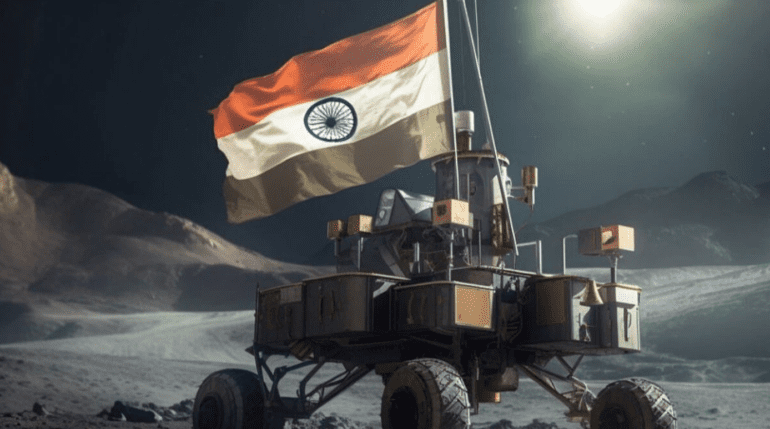TL;DR:
- Chandrayaan-3’s successful landing on the lunar surface marks India’s achievement as the first country to reach the Moon’s south pole.
- Artificial Intelligence (AI) played a pivotal role in ensuring the mission’s success, aiding in data analysis, navigation, and safety optimization.
- AI-driven sensors and cutting-edge technology enabled precise lunar topography anticipation, hazard identification, and secure descent navigation.
- ISRO Chairman S Somnath highlighted the breakthrough sensor array consisting of velocimeters, altimeters, and an array of purpose-driven cameras.
- Integration of data streams through advanced algorithms pinpointed the lander’s precise location on the lunar surface.
Main AI News:
The triumphant landing of Chandrayaan-3 on the lunar surface has ignited jubilation across the expanse of India. Notably, this landmark accomplishment not only cements India’s position as the foremost nation to conquer the lunar south pole but also beckons the attention of international space agencies, allured by the promise of water ice reserves. Yet, beneath this feat lies a revelation: Artificial Intelligence (AI) stood as a pivotal architect in the orchestration of the Indian Space Research Organisation (ISRO)’s lunar odyssey.
In an era where AI is rapidly etching its significance across a multitude of industries, space exploration stands as an emblematic arena of its transformative prowess. The marriage of technology and space is not just an alliance; it’s a symbiotic fusion that begets myriad benefits. From expeditiously deciphering voluminous data streams to proffering prescient insights, from enabling autonomous navigation to optimizing multifaceted mission operations – AI emerges as the conduit of innovation, unshackling the frontiers of exploration.
Within the contours of India’s ambitious Chandrayaan-3 mission, AI has radiated its brilliance, mirroring the triumphs of antecedent space voyages. Central to this achievement are AI-driven sensors, akin to sentinels, vigilant in their task of ensuring a secure and seamless lunar touchdown. Endowed with the prowess to anticipate the lunar topography, discern lurking hazards, and navigate the descent with finesse, these technological maestros abrogate risks and amplify safety margins.
At the helm of this monumental saga stands S Somnath, the virtuoso helmsman of ISRO. His revelation unfurls a technological breakthrough that unveils an ensemble of sensors – a symphony of velocimeters and altimeters. This ensemble bestows the lander with the cognitive acumen to gauge its velocity and altitude with precision akin to an artisan’s touch. Complementing this orchestra of sensors are an array of sophisticated cameras, each bearing a distinct responsibility – from hazard avoidance to inertia-based capture. These disparate data streams, akin to tributaries, converge seamlessly through the intricate channels of advanced computational algorithms, coalescing into a comprehensive tapestry that pins down the lander’s exact coordinates.
The marriage of AI and sensors, manifested in Chandrayaan-3’s celestial sojourn, does not merely represent a technological convergence; it stands as a testament to human ingenuity and a harbinger of the uncharted frontiers that await. As India basks in the glory of this triumph, the saga reverberates across the cosmos, an ode to innovation and a prelude to the cosmic chronicles yet to be inscribed.
Conclusion:
The triumph of Chandrayaan-3, propelled by AI and advanced sensors, ushers in a new era of space exploration. This technological synergy showcases AI’s transformative potential across industries, heralding a paradigm shift in how we navigate and understand the cosmos. As the global market witnesses this milestone, there’s a potential for increased investment in AI-driven space technologies, fostering innovation and collaboration between the private and public sectors.

